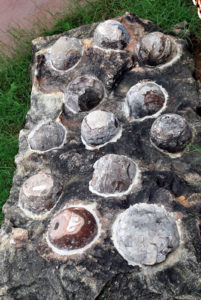 Paleontologists have just uncovered a large clutch of fossilized eggs belonging to the ancient winged reptile the pterosaur, making this one of the largest and most important finds in (pre)history.
Paleontologists have just uncovered a large clutch of fossilized eggs belonging to the ancient winged reptile the pterosaur, making this one of the largest and most important finds in (pre)history.
Science News reports on this find, explaining just how important this find of 215 preserved eggs could be to our understanding of the past. At least sixteen of the eggs found so far have contained partial embryos, with some still in a state of preservation well enough to be researched.
The dig was led by vertebrate paleontologist Xiaolin Wang, a researcher at Beijing’s Chinese Academy of Sciences. The team found these eggs in a block of sandstone, a spot that had previously been dug before responsible for some of the only other fossilized eggs found to date.
Every egg belongs to a single species of reptile, the Hamipterus tianshanensis, which lived in the early Cretaceous Period in northwestern China, about 120 million years ago. What makes these eggs so unique (as well as so rare) is the outer casing, which is closer to modern lizards in its softness rather than matching the hardness of dinosaurs or birds. Not only that, their softness typically caused them to become flattened if they were preserved at all, meaning those with three dimensionally fossilized embryo like these are almost unheard of.
According to Alexander Kellner, coauthor of the study working for Museu Nacional/Universidade Federal do Rio de Janeiro, finding these eggs could open “a new window” into what development was like for these animals. He also notes that this was not an original nesting site for the pterosaurs, speculating that the eggs were carried there due to floods and buried with sediments along the way due to damage some of them sustained. Luckily for humans, though, this series of events is what allowed them to be preserved in the first place, as they would have likely decomposed otherwise.
Internal scans of the eggs reveal many new revelations regarding pterosaur biology and development, such as a lack of crucial wing bones near the end of what scientists speculate would be gestation. This would indicate that, due to having fully formed leg bones, the reptiles could walk but not fly upon hatching and would be cared for by parents for some time during childhood.
Though it’s crucial to remember this to only be speculation, what we can find from these eggs, as well as any more hidden within the Earth, remains to be seen, with researchers hoping to find more in the near future.





